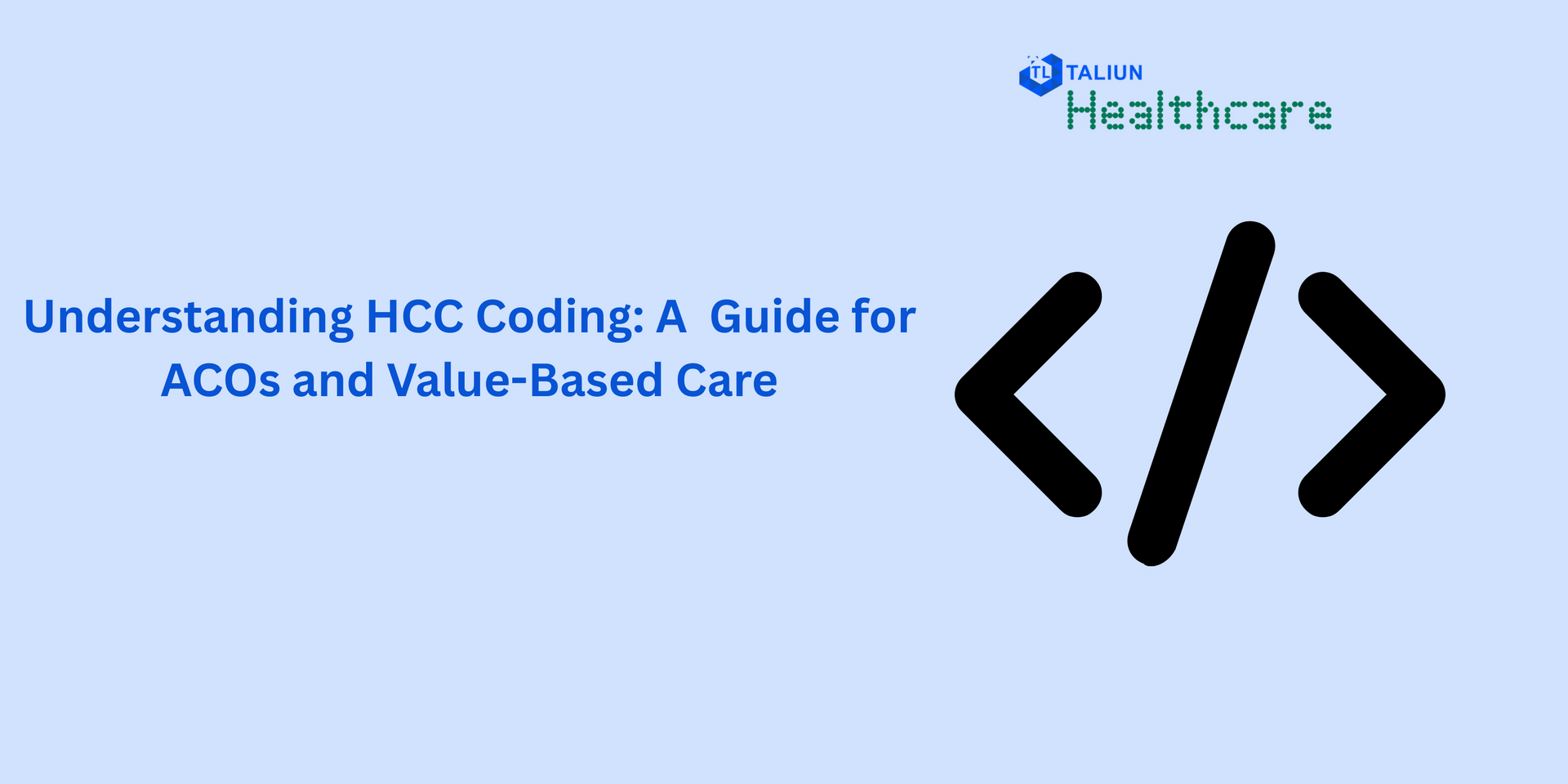Understanding HCC Coding: A Comprehensive Guide for ACOs and Value-Based Care

Introduction
In today’s healthcare ecosystem, precision in diagnosis is more important than ever. As the industry shifts from fee-for-service to value-based care, the need to capture the complete clinical picture of a patient is crucial. This is where Hierarchical Condition Category (HCC) coding plays a pivotal role. Whether you are a provider in an Accountable Care Organization (ACO), a payer, or a healthcare data analyst, understanding the importance and intricacies of HCC coding is vital for delivering quality care and receiving accurate reimbursements.
What is HCC Coding?
HCC coding is a risk-adjustment model originally developed by the Centers for Medicare & Medicaid Services (CMS). It is used to estimate future healthcare costs for patients based on their medical conditions. By assigning a numeric value (RAF score) to a patient’s health status, CMS and other payers can allocate appropriate funding to health plans and providers who manage those patients. This process is central to the HCC risk adjustment model.
Each HCC category represents a group of clinically related diagnoses that are expected to have similar cost patterns. For example, diabetes, congestive heart failure, and chronic kidney disease all fall into different HCC categories. The higher the number and severity of a patient’s documented conditions, the higher their RAF (Risk Adjustment Factor) score, and subsequently, the higher the reimbursement for their care. This is the backbone of the HCC model.
Why is HCC Coding Critical for ACOs and Value-Based Care?
Accountable Care Organizations and other entities participating in value-based models rely heavily on accurate documentation to assess patient risk, optimize care delivery, and ensure fair compensation. Since these models reward outcomes rather than volume, failing to document chronic conditions can significantly impact financial performance.
Inaccurate or incomplete HCC coding can lead to underreported patient risk, resulting in insufficient payments and the misallocation of resources. Conversely, overreporting or unsupported diagnoses can trigger audits and penalties. Therefore, striking the right balance through compliant and precise HCC medical coding is not optional—it's essential.
How Does the HCC Model Work?
HCC coding functions through a multi-step process:
- Documentation: Providers must document all active chronic conditions during patient encounters.
- Diagnosis Coding: These conditions are converted into ICD-10-CM codes.
- HCC Mapping: The ICD-10-CM codes are then mapped to the appropriate HCC categories.
- RAF Score Calculation: Each HCC has an associated weight, and the combination of weights contributes to the patient's overall RAF score.
- Payment Adjustment: The RAF score is used to adjust payments to health plans and providers managing these patients.
This system ensures that healthcare organizations receive payments that reflect the expected cost of managing complex patients. Understanding how this HCC risk adjustment model works is essential for financial and clinical success.
RAF Score: The Backbone of Risk Adjustment
The Risk Adjustment Factor (RAF) score represents the cumulative risk associated with a patient. A healthy individual may have a RAF score close to 1.0, while someone with multiple chronic illnesses could have a significantly higher score. This number directly influences the capitation payment a provider or ACO receives.
Common Challenges in HCC Coding
While the system is conceptually straightforward, several challenges often arise:
- Incomplete Documentation: Providers may fail to document all chronic conditions annually.
- Coding Errors: Inaccurate or outdated ICD-10-CM codes may result in missed or incorrect HCCs.
- Lack of Provider Education: Not all clinicians are trained in the nuances of risk adjustment and HCC capture.
- Audit Risks: Improper coding can trigger costly audits and compliance reviews.
Best Practices for Effective HCC Coding
To mitigate these challenges, organizations should implement a series of best practices:
- Comprehensive Annual Wellness Visits: Use these visits to reassess and document all chronic conditions.
- Ongoing Provider Education: Regular training ensures that providers stay updated on coding guidelines.
- Coding Validation and Review: Employ coders or auditors to review charts for completeness and accuracy.
- Technology Integration: Utilize EHRs and analytics tools to flag suspect diagnoses and track HCC coding trends.
The Role of Clinical Suspecting
Clinical suspecting refers to the proactive identification of potential diagnoses that may not yet be documented but are likely present based on lab results, medications, or patient history. This data-driven approach helps close coding gaps and ensures that the RAF score accurately reflects the patient's health.
Compliance Considerations
While optimizing RAF scores is important, compliance must never be compromised. Every diagnosis must be supported by documentation and reflect conditions that were addressed during the visit. Upcoding or coding conditions without clinical justification can result in severe penalties under CMS audits.
Future of HCC Coding
CMS continues to evolve the HCC model, with newer versions incorporating more conditions and refining the weighting methodology. The increasing adoption of AI and machine learning is also expected to transform how suspecting, HCC medical coding, and documentation are conducted in the near future.
Key Takeaways for Healthcare Leaders
HCC coding is not just a billing requirement; it is a foundational component of risk-based healthcare. For ACOs and providers navigating the complexities of value-based care, mastering HCC coding is essential for both clinical and financial success. The HCC risk adjustment model is increasingly vital in aligning care quality with reimbursement.
Organizations like
Taliun are helping ACOs and value-based entities leverage advanced data analytics to optimize HCC coding practices, streamline documentation, and enhance RAF accuracy. Partnering with the right analytics platform can be the key to unlocking the full potential of your risk-adjusted care model.




